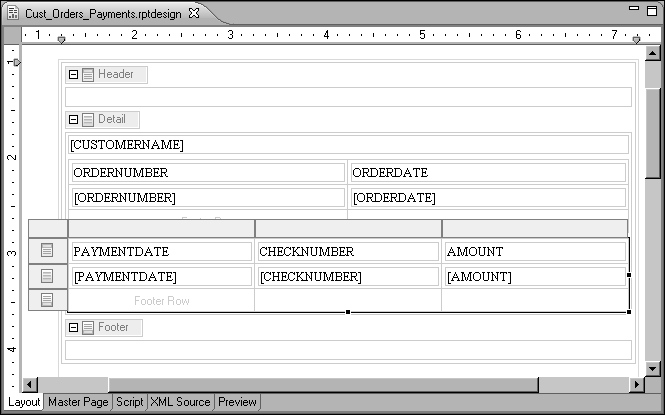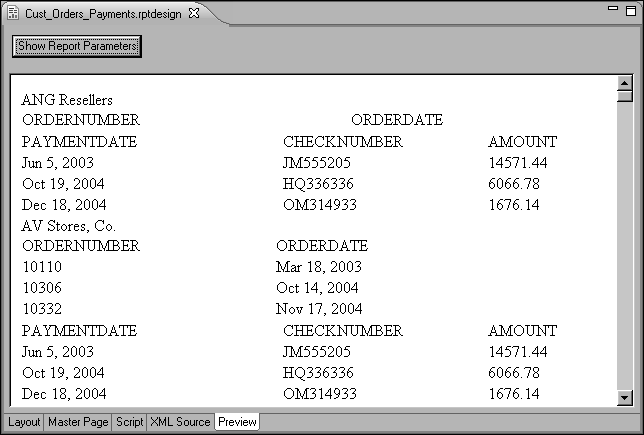|
 |
|
| |
The payments subreport shows, in a row and column format, the payments that each customer made. It displays the payment date, check number, and amount of each order. To iterate through the Payments data set rows and display them in a row and column format, you use a table element. This time, you use an alternate and quicker method to insert the table and the data set fields in the table.


As with the orders subreport when you first created it, the same payment records repeat for every customer because you specified a default value of 103 for customerNumber when you created the parameter, CustID, for the Payments data set. Because of this default value, the payments subreport always displays the payment records for customer 103. Just as you did for the orders subreport, you need to dynamically update the value of the CustID parameter for each customer in the master report.
|
|
|
